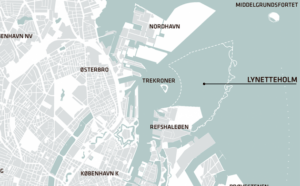News
Lynetteholm environmental impact projections based on 41-year-old research
This article is more than 3 years old.
Greenlighting the dumping of sludge in Køge Bay was partly based on US report involving canal dredging from 1981

Lynetteholmen’s financial plan has been declared unrealistic by the mayor of Copenhagen (photo: By & Havn)
Since January, hundreds of thousands of tonnes of sludge has been dumped into Køge Bay as part of the massive Lynetteholm artificial island construction project.
The issue came to prominence after attracting heavy criticism from the Swedish government, among others.
Despite that, the Danish authorities continue to maintain that the dumping doesn’t affect the sea environment in the bay – referring to the project’s environmental impact report.
But now national broadcaster DR has uncovered how the report is based on, among other things, a 41-year-old article from the US.
“It’s based on a number of assumptions for which there is no immediate evidence, so it resembles speculation,” Karen Timmermann, a DTU Aqua professor, told DR.
READ ALSO: Sweden wants Denmark to stop dumping toxic Lynetteholm sludge in Køge Bay
Sticking to their guns
Timmermann’s conclusion is backed by several other Danish experts and the authors of the original US report, which pertains to the environmental impact of canal dredging in a number of US estuaries.
Fred Lee, one of the researchers behind the report, underlined that their method would require thorough investigations of local conditions in Køge Bay to be used as evidence.
“We don’t understand how the orgnisation behind this project has used our data to reach the conclusion there is no significant environmental impact,” Lee told DR.
Despite the news, city developer By & Havn maintains that its environmental impact report is sound and that this was the best calculation procedure.
To add insult to injury, a heavy grey residue recently began washing up in Copenhagen waterfront areas, much to the disdain of local residents.
Generated by the construction of the dams needed to complete the first phase of the building work, when sand comes into contact with water, By & Havn has confirmed the foam is not toxic.
Nevertheless, locals are adamant they will no longer bathe in their local designated area.










































